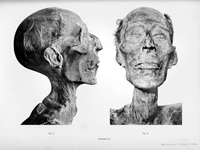Data from NASA ChandraXray and Hubble come together in this image to highlight the beautiful but violent events occurring at the center of a purple galaxy 230 million light-years away.
The combination of telescopes reveals the presence of a supermassive black hole and the jets it generates. The gas swirling near the black hole causes bubbles of material that are blown toward the galaxy cluster, and long filaments of gas extend beyond the galaxy toward the X-ray-emitting gas that fills the cluster.
Composite photographs like this one provide important clues about how black holes affect their surroundings. X-ray data from Chandra contribute soft purple shells around the outer periphery of the center. Dust lanes, star formation regions, hydrogen filaments, foreground stars and background galaxies are contributions from Hubble optical data. Fun fact: These hydrogen filaments are the only visible-light evidence of the relationship between the central black hole and the surrounding gas.
This galaxy is at the center of the Perseus Cluster, a massive cluster of galaxies immersed in an enormous cloud of gas so hot that it glows only in X-rays. The Perseus galaxy cluster is 11 million light-years across and is named after its host constellation.
Image description: A galaxy with a white center surrounded by pink lobes above and below. Outside the pink lobes there is a purple shell surrounding the galaxy. Strands of red gas extend from the center of the galaxy. Farther out, bright stars are scattered around the edges of the image.
Credit: Image: NASA, ESA and L. Frattare (STScI); Science: X-ray: NASA/CXC/IoA/A. Fabian et al; Radio: NRAO/VLA/G. Taylor; Optics: NASA, ESA, Hubble Legacy (STScI/AURA)-ESA/Hubble Collaboration and A. Fabian (Institute of Astronomy, University of Cambridge, UK)


 Nielawore
Nielawore









Yorum yazmak için lütfen giriş yapınız